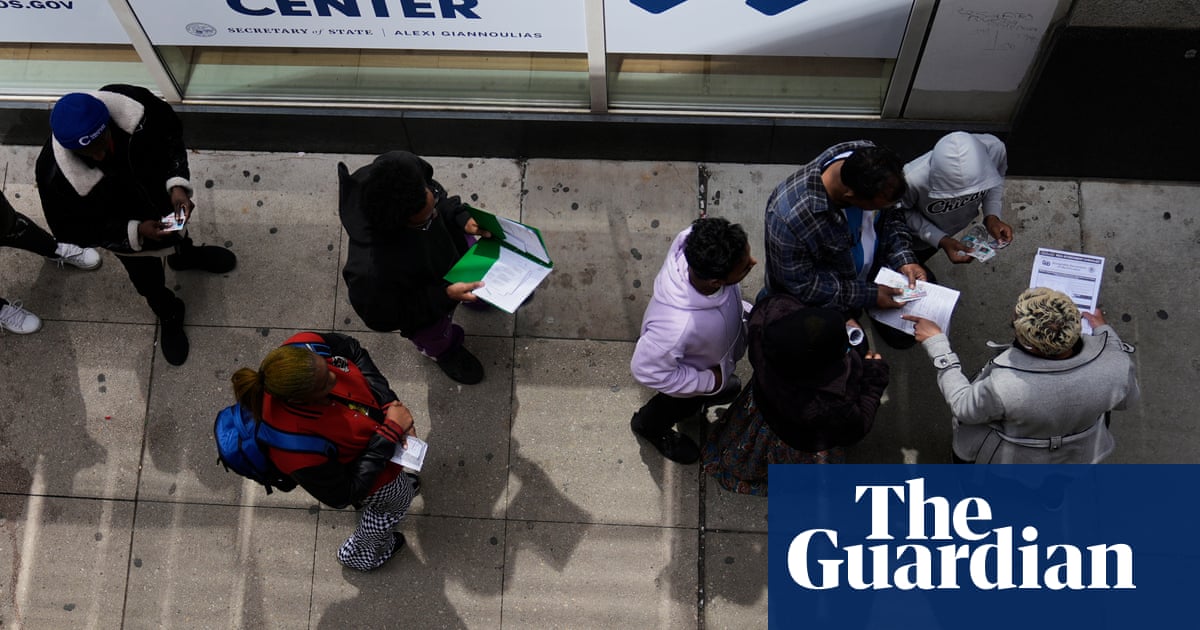Real ID requirements for those flying within the United States begin Wednesday after nearly 20 years of delays.
The day ahead of the deadline, people lined up at government offices across the country to secure their compliant IDs. InChicago, officials established a Real ID Supercenter for walk-in appointments, while officials in California and elsewhere planned to continue offering extended hours for the crush of appointments.
“I’m here today so I won’t be right on the deadline, which is tomorrow,” said Marion Henderson, who applied for her Real ID on Tuesday in Jackson, Mississippi.
The homeland security secretary, Kristi Noem, on Tuesday assured people who don’t yet have a REAL ID but need to take a domestic flight Wednesday that they will be able to fly after clearing additional identity checks.
Some complained about the need to secure the ID after waiting in line for hours.
Michael Aceto waited in line at a DMV in King of Prussia,Philadelphia, for about two and a half hours Tuesday before getting his Real ID.
“It’s a pain in the butt. It’s really a lot of time. Everybody’s got to take off from work to be here,” he said. “It’s a big waste of time as far as I’m concerned.”
The Transportation Security Administration warned people who don’t have identification that complies with Real ID requirements to arrive early at the airport and be prepared for advanced screening to avoid causing delays.
The new requirements have been the subject of many Reddit threads and Facebook group discussions in recent weeks, with numerous people expressing confusion about whether they can travel without a Real ID, sharing details about wait times and seeking advice on how to meet the requirements.
Noem told a congressional panel that 81% of travelers already have Real IDs. She said security checkpoints will also be accepting passports and tribal identification, like they have already been doing.
Those who still lack an identification that complies with the Real ID law “may be diverted to a different line, have an extra step”, Noem said.
“But people will be allowed to fly,” she said. “We will make sure it’s as seamless as possible.”
Real ID is a federally compliant state-issued license or identification card that Homeland Security says is a more secure form of identification. It was a recommendation by the 9/11 Commission and signed into law in 2005. It was supposed to be rolled out in 2008 but the implementation had been repeatedly delayed.
“The whole idea here is to better validate those individuals that were encountering a checkpoint to ensure they are who exactly they say they are,” said Thomas Carter, TSA’s Federal Security Director in New Jersey.
Carter said those without a Real ID should give themselves extra time to clear security.
“If they do that, I do not have a belief that this will cause people to miss their flights if they take that additional time in,” he said.
Besides serving as a valid form of identification to fly domestically, people will also need a Real ID to access certain federal buildings and facilities.
State government offices that issue driver’s licenses and state IDs have seen a significant increase in demand for Real ID, and some have extended their office hours to meet the demand. Some officials have recommended people wait for a while to get Real ID-compliant licenses and cards if they don’t have flight planned in the next few months.
“We are encouraging people who have passports or other Real ID-compliant documents and people who don’t have travel plans in the next few months to wait until after the current rush to apply for a REAL ID,” said Erin Johnson, a spokesperson with the Minnesota department of public safety.
Johnson said that the department has seen a significant increase in demand for Real ID in recent weeks. In February, there were more than 48,000 applications for a Real ID; that has nearly doubled to over 99,000 in April, she said.
